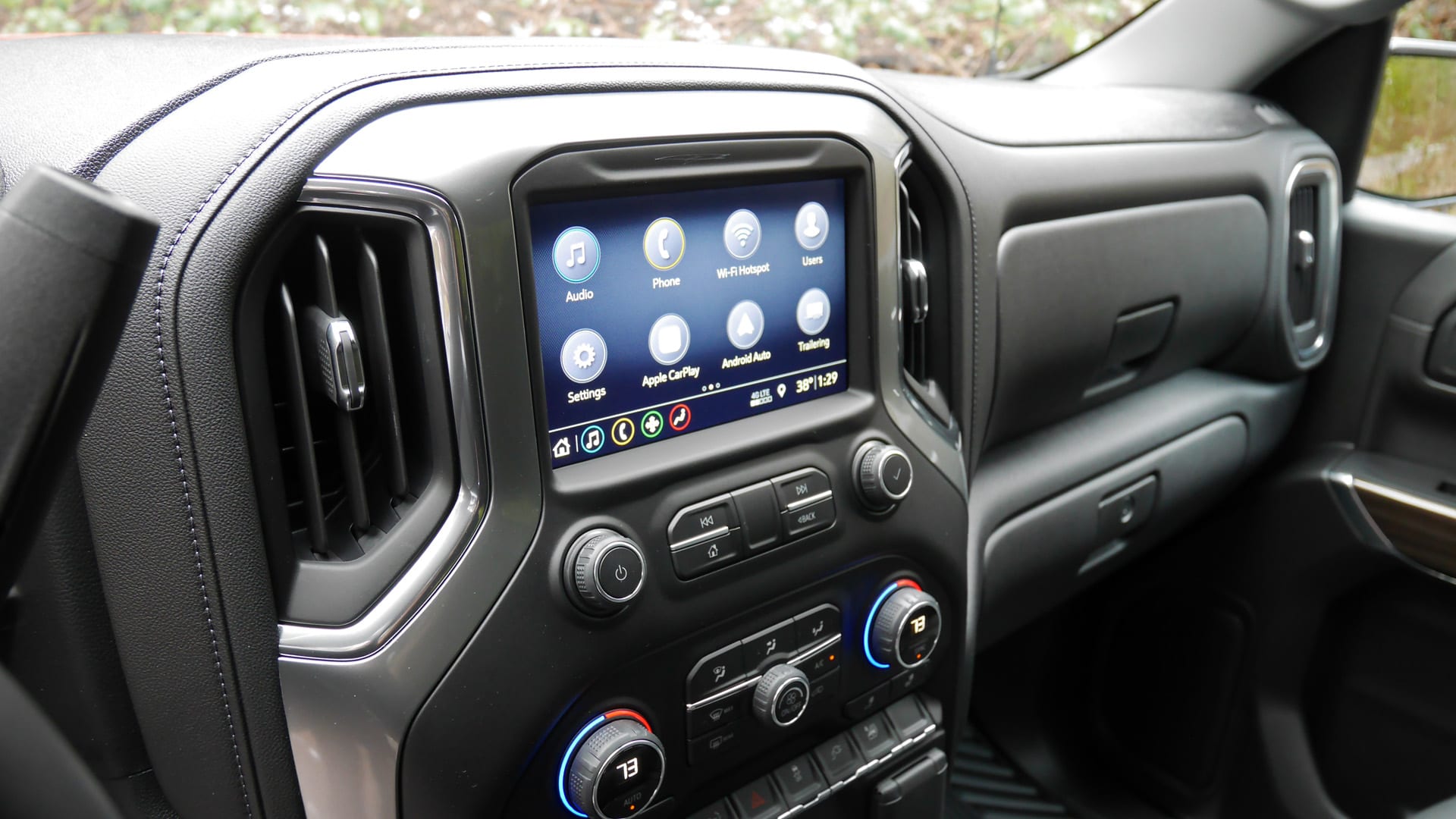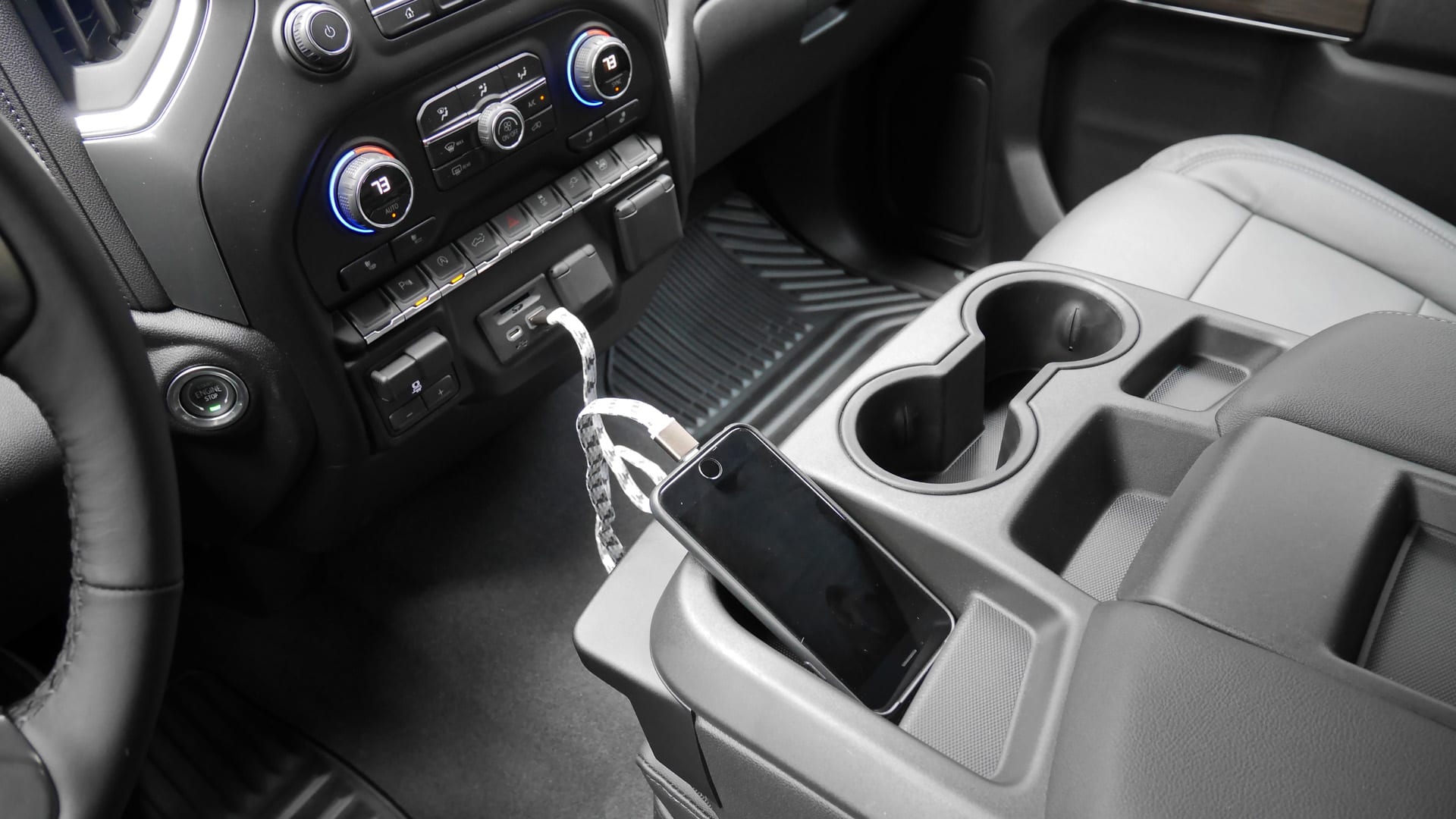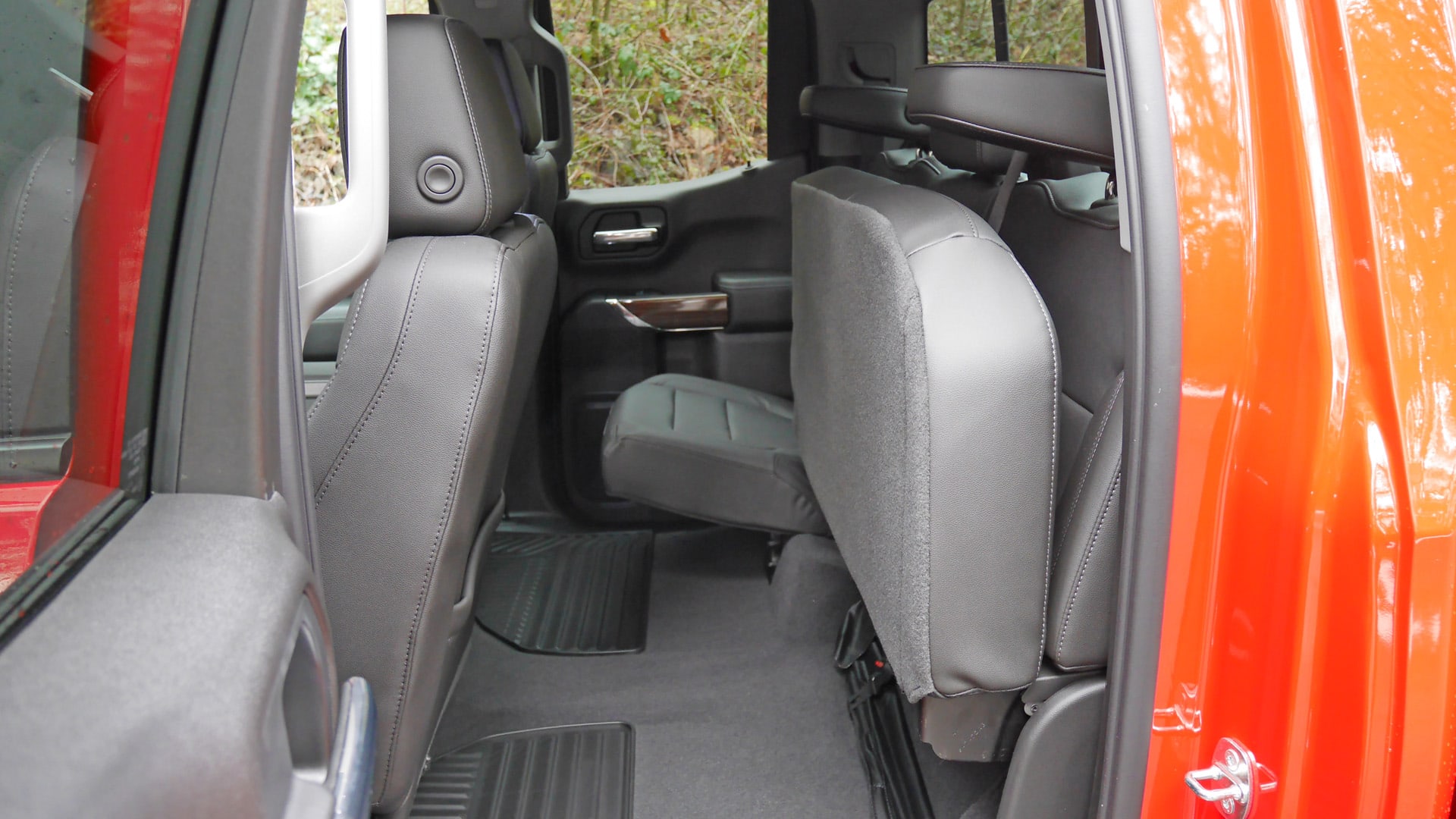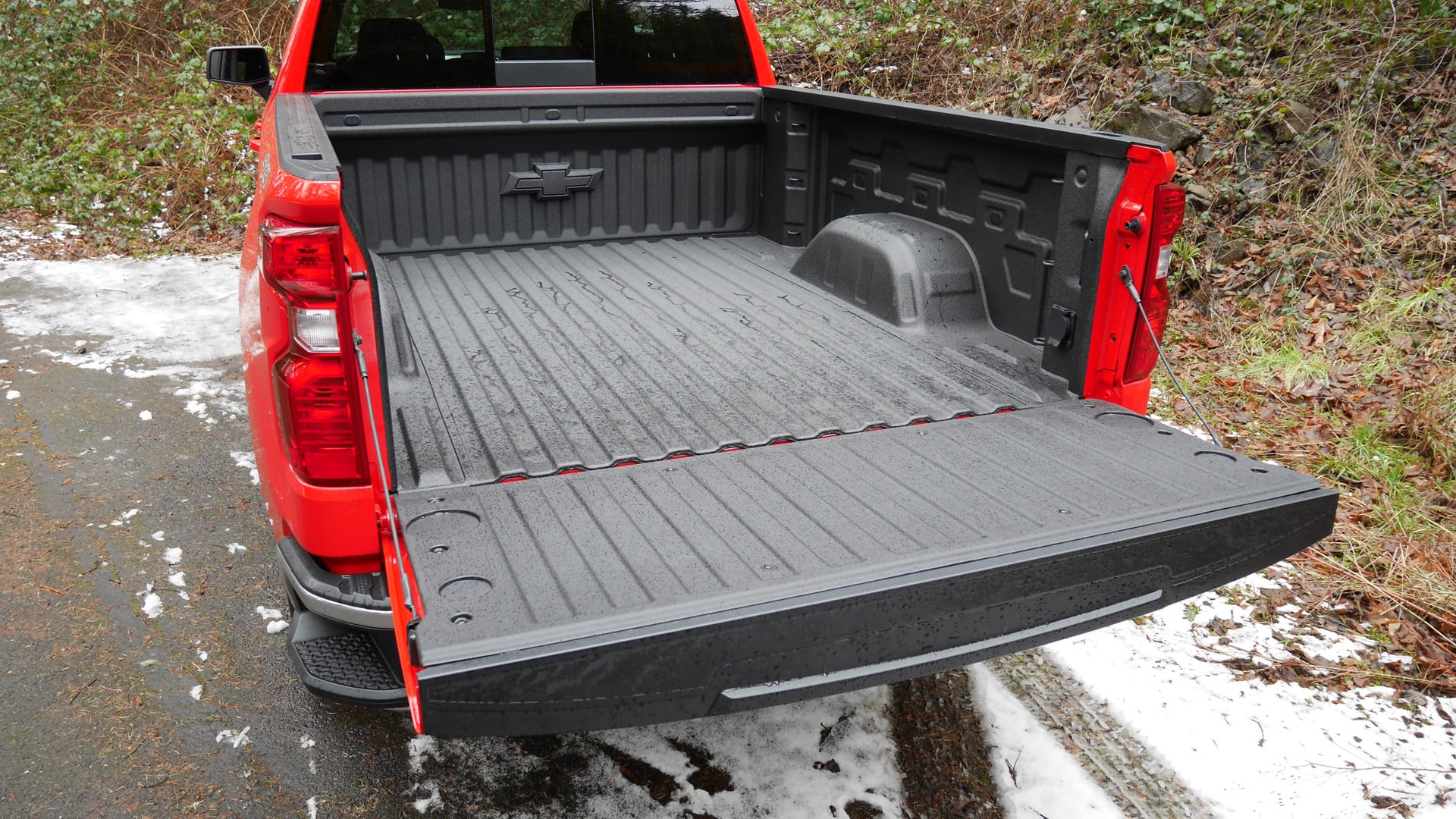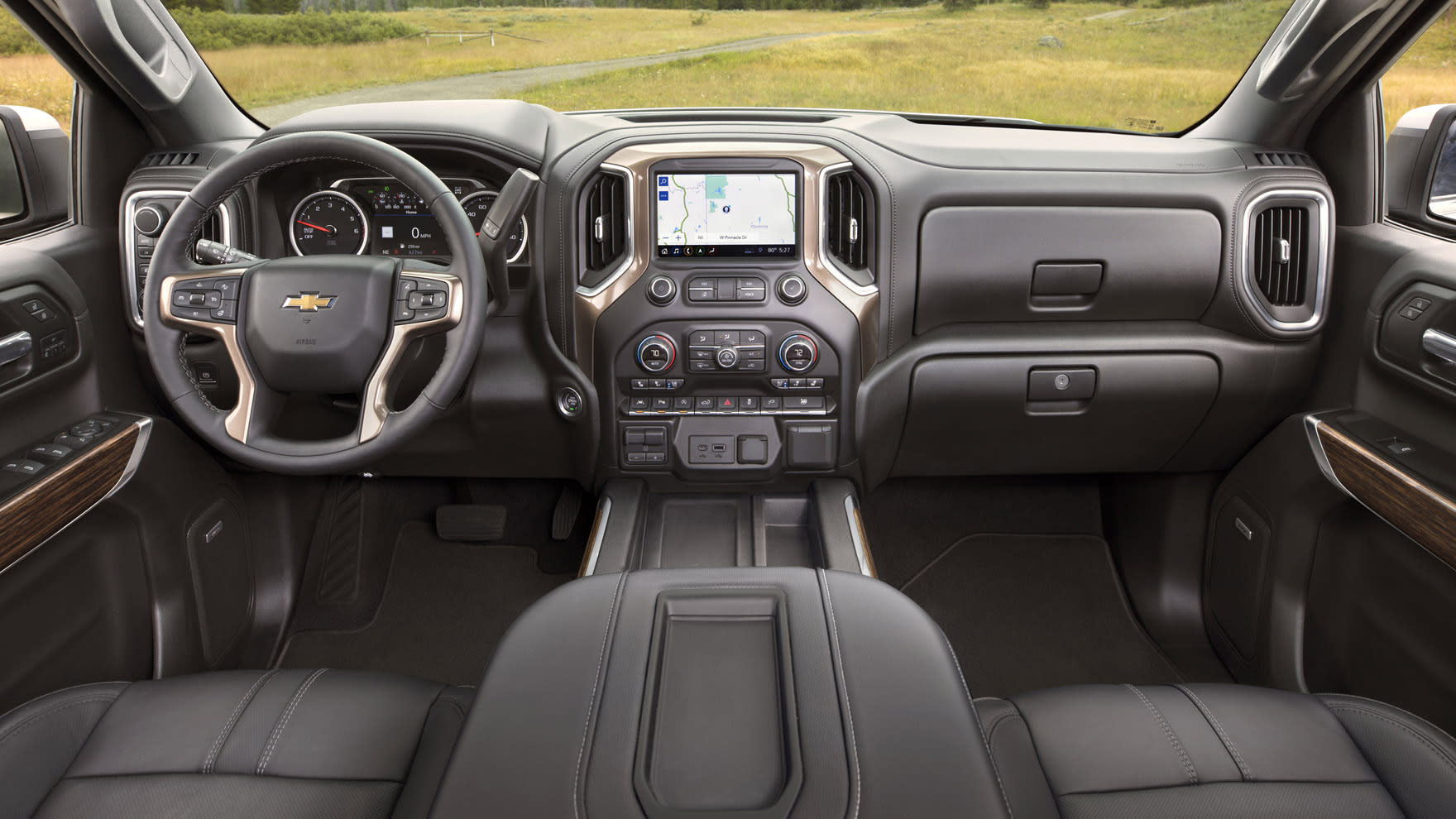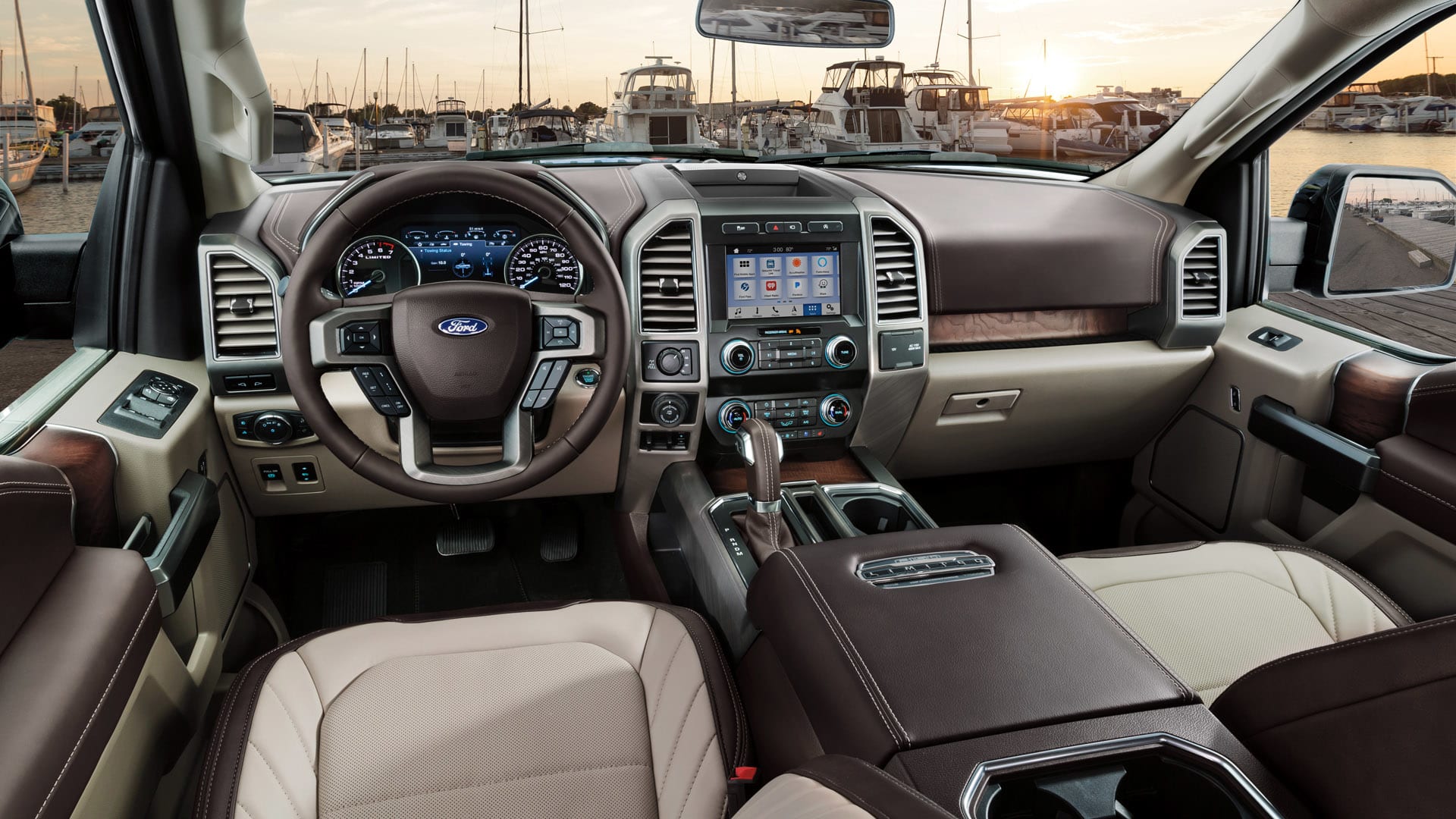 In sports, a team can have a great off-season spent improving its roster, generating plenty of positive headlines, but that team can still end up losing if all the other teams got even better. And thus is our metaphor for the 2020 Chevrolet Silverado 1500, a truck that’s a whole lot better than the one it replaced last year, but one that falls short when compared to its Ram and Ford competitors.
In sports, a team can have a great off-season spent improving its roster, generating plenty of positive headlines, but that team can still end up losing if all the other teams got even better. And thus is our metaphor for the 2020 Chevrolet Silverado 1500, a truck that’s a whole lot better than the one it replaced last year, but one that falls short when compared to its Ram and Ford competitors.
Now, its strong capability, diverse powertrain lineup and generous infotainment offerings still make the Silverado worthy of lengthy test drives. It’s certainly not a bad choice. Yet, it just doesn’t go far enough in a number of areas — most notably its drab and cheap interior — to generally outdo the other teams’ talents.
What’s new with Silverado for 2020?
The Silverado was completely redesigned last year, and although changes are few for 2020, we do see a dramatic increase in engine availability. Chiefly, the 6.2-liter V8 trickles down the lineup and is now offered on the Custom Trail Boss, LT Trail Boss and RST trim levels. On the other end of the cylinder count, the 2.7-liter turbocharged four-cylinder can now be had on the Custom trim level as an option (it’s standard on the LT and RST). Finally, the 5.3-liter V8 with Dynamic Fuel Management can now be paired with the 10-speed automatic previously reserved for the 6.2. It’s standard on the LT Trail Boss and optional on the High Country. All other versions of the 5.3-liter with DFM stick with the eight-speed auto.
Technology has also been upgraded, as the Silverado HD’s new trailering apps and 15-view trailering camera system trickle down to the 1500. The available adaptive cruise control system is also enhanced with a new camera-based sensor.

What’s the Silverado’s interior and in-car technology like?
The Silverado’s cabin is its least compelling and competitive attribute, falling far behind the Ram 1500 and Ford F-150 in terms of quality and visually appealing design. Even the range-topping High Country lacks the luxurious touches and ambiance we’ve come to expect in such high-dollar trucks. Although it represents a minor upgrade over the previous Silverado, the segment has improved dramatically to the point that even those looking at a more basically equipped model can now expect more than what the Silverado’s interior provides.
That said, at least the technology offerings are generous. Every trim level comes standard with a 7-inch touchscreen, Apple CarPlay, Android Auto and a six-speaker sound system (two speakers with a regular cab). Starting with the popular LT trim, you get two extra USB ports, an 8-inch touchscreen, OnStar and in-truck 4G LTE WiFi. Upper trim levels can add extra USB ports, various trailering apps and aids, multiple camera systems for parking and trailering, wireless smartphone charging and audio upgrades.
How big is Silverado?
The Silverado 1500 Crew Cab is the biggest one yet, with limo-like sprawl-out space in its back seat aided by a colossal rear door. As expected, the Double Cab’s rear seatback is more upright and less comfortable. Legroom may be class-leading, but it’s still tight behind a tall driver, meaning the Double Cab’s back seat is ultimately best suited for occasional use. At least its front-hinged rear doors are a better setup than the F-150 Super Cab’s annoying clamshells.
As usual, you can get a three-person 40/20/40 split bench up front or bucket seats with a full center console. For the three-person front bench, the Silverado provides decent storage space, including a bin under the seat, another under the armrest, a pair of sizable cupholders and a decent place to store your phone. The bucket seat setup’s center console lacks the clever storage solutions of the Ram 1500, and like every Silverado utilizes a space-saving (but not very sexy) column-stalk shifter.
What about the bed? The thinner, taller walls introduced last year have resulted in a bed that ultimately holds more than anything else in the segment. There’s more to consider than just bed length. Maximum payload ranges from 2,130 pounds for a 4×4 Crew Cab to 2,280 for a 4×2 Regular Cab. This is generally a few hundred pounds more than an F-150 or Ram 1500, which could theoretically make a difference, but you’d still be better off with a heavy-duty truck if you’re going to be routinely maxing out payload in such a way.

What’s Silverado’s performance and fuel economy?
The 2020 Silverado is available with an unmatched diversity of engine options, along with multiple transmissions and even cylinder deactivation systems. To make it easier to see which powertrain combo is available with which trim, we have provided a chart below in addition to describing the performance and fuel economy of each engine.
Things start off with a 4.6-liter V6 that produces 285 horsepower and 305 pound-feet of torque. It comes standard with a six-speed automatic and Active Fuel Management (AFM) that shuts down half the cylinders to save fuel. All trims get 17 mpg in combined driving with this engine, except the Trail Boss that gets 16 mpg.
The unique 2.7-liter turbocharged four-cylinder produces 310 hp and 348 lb-ft of torque. It has an eight-speed automatic and also gets AFM (yes, it can run on two cylinders). It achieves between 19 and 21 mpg combined, which may seem like a minor advantage, but in terms of actual gas money spent, it’s a big deal. It’s also the best fuel economy of any non-diesel full-size truck.
The base V8 is a 5.3-liter unit that produces 355 hp and 383 lb-ft of torque. With its six-speed automatic and AFM it returns 17 mpg combined. However, certain trim levels can outfit this engine with an eight-speed automatic and the more advanced Dynamic Fuel Management (DFM) that raises fuel economy to 18 (4WD) or 19 (2WD) mpg combined. For 2020, however, you can also pair it in certain trims with a 10-speed automatic. This should improve fuel economy further, but official figures had not been released at the time of this writing.
The upgraded V8 displaces 6.2 liters and produces 420 hp and 460 lb-ft of torque. It only gets the 10-speed and DFM, and returns 17 mpg combined.
Also new for 2020 is a 3.0-liter turbodiesel inline-six engine that produces 277 hp and 460 lb-ft of torque. It too gets the 10-speed automatic. Fuel economy figures have not been announced but should be the Silverado’s highest.

What’s the Silverado like to drive?
As you can tell from the huge number of drivetrains and trims levels, there are a lot of answers to this question. But we have driven a few different versions. We spent some time in a 5.3-liter Trail Boss, and found the engine paired well with the eight-speed automatic. We also towed a heavy loadwith a different Silverado powered by the big 6.2-liter and found that it did feel stronger than the 5.3-liter truck, but that you don’t strictly need it. The 5.3 is more than capable.
We found the turbocharged four-cylinder to be as beefy and efficient as advertised, easily assuaging concerns that you can’t put a four-cylinder in a full-size truck. Still, we think that it represents questionable value relative Ford’s small turbo V6 and Ram’s mild-hybrid V8.
Regardless of engine, we’ve been impressed with the Silverado’s road holding and steering. It feels more nimble than its rival trucks, as well as its predecessor. The ride quality is a sore spot, however. The LT Double Cab we tested bounded nautically over bumps, while other trims with bigger wheels produce tiresome impact harshness.
What more can I read about the Chevrolet Silverado?
2019 Chevrolet Silverado LT Double Cab 2.7T Review
Find out what the Silverado Double Cab is like, as well as how the new turbocharged four-cylinder engine performs. You can also read more about the four-cylinder’s engineering in our Silverado 2.7L RST first drive review.

2019 Chevrolet Silverado LT Trail Boss Drivers’ Notes Review
Our editors in Michigan test the off-roading LT Trail Boss version of the new Silverado.
2019 Chevrolet Silverado 1500 First Drive Review
Our first chance behind the wheel covers more trim levels and includes a tow test. We also provide in-depth details about the new Silverado’s engineering and design.
What features are available and what’s Silverado’s price?
The 2020 Chevrolet Silverado 1500 is available in regular cab, (extended) Double Cab and Crew Cab styles as well as three bed lengths and two front seating options. There are then eight trim levels: Work Truck, Custom, Custom Trail Boss, LT, RST, LT Trail Boss, LTZ and High Country. You can see which engines are available on what trim level in the table above.
Pricing for 2020 was not available at the time of this writing, but we expect it to be very close (if not identical) to that of 2019 that started at $29,895 for a regular cab Work Truck, including a $1,595 destination charge. Even that trim includes automatic headlights, power windows and locks (Double and Crew cabs), a rearview camera, a 7-inch touchscreen, Apple CarPlay and Android Auto. However, it also has vinyl seats and flooring, so consumers are most likely to start with the more civil Custom ($36,195 in 2019) that add basics upgrades like alloy wheels, cloth upholstery, carpeting, and cruise control.
The LT additions include LED headlights, auto climate control, extra USB ports, OnStar and 4G LTE WiFi.
The RST is largely an LT with body-colored trim in place of chrome, and a few extra niceties. The LTZ and High Country are the luxury trim levels. Although they certainly slather on the equipment, we’ve found their interiors to not be luxurious enough in look, feel or quality to warrant their lofty price points. They are nowhere close to what you’d get in a Ram 1500 Limited or Ford F-150 Platinum for basically the same money. See the photos below for reference.
Finally, the two Trail Boss trim levels add a 2-inch suspension lift, Rancho monotube shocks, special 18-inch wheels, Goodyear Duratrac off-road tires, a trailering package and the contents of the Z71 Off-Road package available on other trims: a two-speed transfer case, auto-locking rear differential, hill descent control and skid plates.
What are Silverado’s safety equipment and crash ratings?
Forward collision warning, low-speed automatic emergency braking and lane-keeping assist are only available on the range-topping LTZ and High Country trim levels. Blind-spot and rear cross-traffic warning are available on all trim levels. A variety of camera systems and other technology features are also available to improve trailering, both in terms of ease of use as well as safety.
The Insurance Institute for Highway Safety gave the Silverado 1500 Crew Cab the highest possible rating of Good in all crash categories but the new small overlap front-passenger test where it got a Marginal (third of four) score. It also got a Poor headlight rating, but a Superior rating for its optional forward collision warning/prevention system.
What competitors to Silverado should you also consider?
Ram 1500
Our top full-size truck choice. Its innovation, ride quality and interior consistently impress.
Ford F-150
The oldest of the three American trucks, but still holding its own with constant updates and a diverse array of powertrain and model choices.

